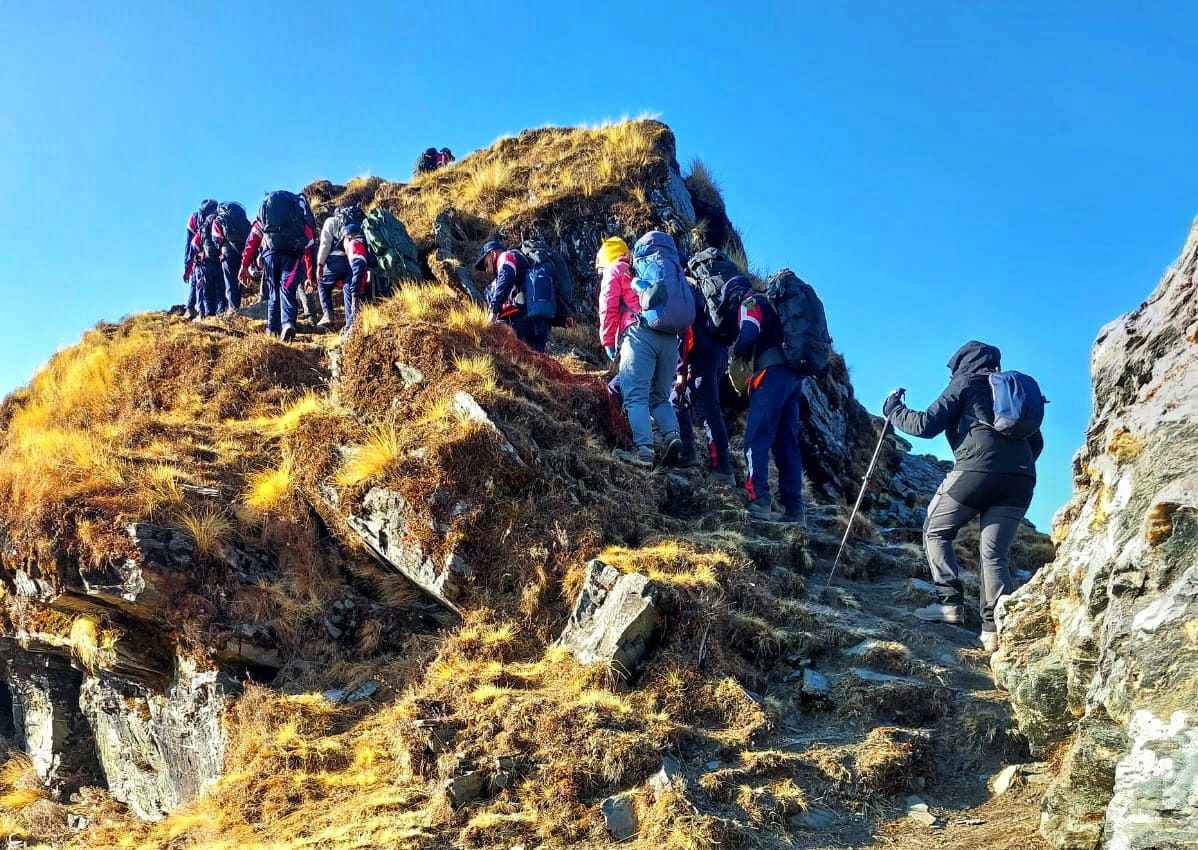Altitude mountain sickness (AMS) is a common problem faced by those who venture into high-altitude areas. It can range from mild symptoms like headache and nausea to severe conditions like high-altitude pulmonary edema (HAPE) and high-altitude cerebral edema (HACE). But don’t let that stop you from exploring the beautiful mountains! With the right precautions and preparations, you can prevent AMS and have a safe and enjoyable experience.
Why it occurs?
Not just trekkers experience it, though some people get complications even from simply travelling to high altitudes. When your body tries to adapt to the reduced air pressure and less oxygen present at high elevations, symptoms develop.
High altitude – 8000-12,000 feet above sea level
Very high altitude – 12,000-18,000 feet above sea level
Extremely high altitude – Above 18,000 feet
However, Altitude mountain sickness may occur in up to half of people who climb to elevations above 8,000 feet.
Who is at risk for altitude mountain sickness?
Altitude sickness can affect anyone. Your risk does not appear to be affected by your age, sex, or general health. You might be more vulnerable if you:
- Rapid ascent to high altitude
- Dehydration – Lack of water intake in the body.
- Have a lung or heart condition: If at all feasible, your doctor may advise avoiding high altitudes.
- Pregnant: Before going to a high-altitude region, consult your doctor.
- Living at a low height puts you at a higher risk for symptoms because your body isn’t accustomed to being at higher elevations. Know the signs of altitude sickness and how to cure it if you’re planning a vacation to a high-altitude area.
- If you’ve ever had altitude sickness, consult your doctor about treatment and prevention before your next trip.
Symptoms of mild and short-term AMS
Mild symptoms usually appear within 6 to 12 hours of ascent and can include:
- Headache
- Nausea
- Dizziness
- Fatigue
- Loss of appetite
- Insomnia
These symptoms usually go away within a day or two, with proper rest and hydration.
Symptoms of moderate AMS
Moderate symptoms can occur after 12 to 24 hours of ascent and can include:
- Severe headache that is not relieved by medication
- Vomiting
- Shortness of breath
- Difficulty sleeping
- Swelling of hands, feet and face
If you experience these symptoms, it’s important to descend to a lower altitude immediately and seek medical attention.
Symptoms of severe AMS
Severe AMS is a medical emergency and can be life-threatening. Symptoms can include:
- Blue or grey lips and fingernails
- Dizziness and disorientation
- Inability to walk or maintain balance
- Severe shortness of breath at rest
- Persistent coughing
- Loss of consciousness
Immediate descent and medical attention are critical in such cases.

HAPE and HACE
HAPE and HACE are two serious conditions that can result from untreated AMS. HAPE is a buildup of fluid in the lungs, which can cause severe breathing difficulties. HACE is a swelling of the brain, which can cause confusion, seizures, and even coma. Both conditions require immediate medical attention and descent to lower altitudes.
Treatment
The best treatment for AMS is prevention. However, if you do experience symptoms, rest and hydration are crucial. Mild symptoms can be relieved with over-the-counter painkillers like ibuprofen or acetaminophen. Oxygen therapy and hyperbaric chambers may also be used in severe cases.
Medication
Diamox (acetazolamide) is a medication that can help prevent and treat AMS. It works by increasing the amount of bicarbonate in the blood, which reduces the buildup of acid in the body that occurs at high altitudes. Diamox can have side effects such as tingling sensations, frequent urination, and nausea, so it’s important to consult with a doctor or your trek leader before using it.

Prevention
The best way to prevent AMS is to give your body enough time to acclimate to higher altitudes. This means taking it slow and steady and allowing for acclimatization days during your trek. Other measures to prevent AMS include:
- Staying hydrated by drinking plenty of fluids
- Avoiding alcohol, caffeine, and smoking
- Eating a balanced diet that includes carbohydrates.
- Consult the doctor before joining the trek.
- Dressing appropriately for the weather conditions
- Using oxygen supplements if necessary. Always under the guidance of someone official.
- Acclimatization day – This is why our high-altitude treks, like those to Rupin Pass, Roopkund, and Nanda Ghunti, include “acclimatisation days.” During these days, you don’t do anything other than relax at a designated campsite.
Don’t let the fear of AMS stop you from exploring the stunning mountain landscapes. With proper preparation, precautions, and treatment, you can have a safe and enjoyable high-altitude experience.


0 Comment